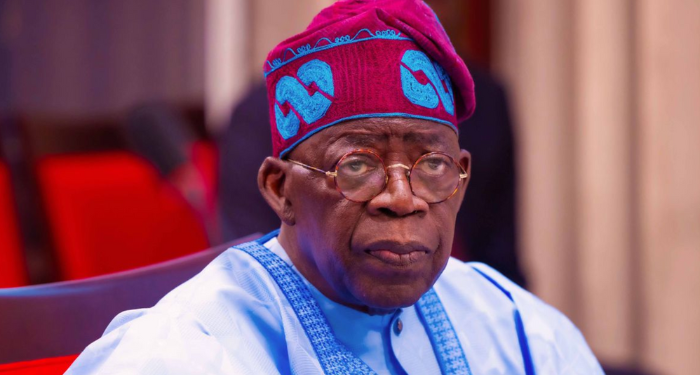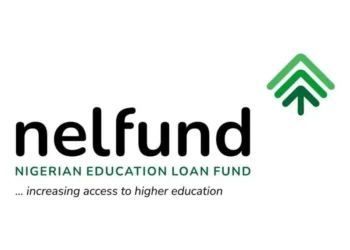The Federal Government of Nigeria (FG) has borrowed a total of N6.17 trillion from the domestic debt market within the first six months of 2025, data from the Debt Management Office (DMO) reveal.
The borrowings were mainly raised through Federal Government Bonds (FGN Bonds), Nigerian Treasury Bills (NTBs), and Promissory Notes (P-Notes), which constitute part of the country’s total domestic debt structure.
The DMO’s data show that N4.48 trillion was raised in the first quarter of 2025, followed by an additional N1.70 trillion in the second quarter, a modest 2.26% increase over the preceding period.
This brought the total domestic borrowings as of June 30, 2025, to N76.59 trillion.
With oil production still below the 1.8 million barrels per day benchmark and non-oil revenues underperforming, the government has increasingly turned to the debt market to sustain its spending commitments.
According to the government’s Medium-Term Expenditure Framework (MTEF), it plans to raise over N13 trillion from the domestic market in 2025 to bridge its budget deficit — a target that may be exceeded if borrowing continues at the current pace.
Bonds remain the preferred borrowing instrument
Nairametrics analysis of the DMO data on domestic borrowing reveals that FGN Bonds remain the backbone of Nigeria’s domestic debt strategy, accounting for nearly 80% of total borrowings.
As of June 2025, FGN Bonds stood at N60.65 trillion, comprising Naira-denominated bonds (N36.52 trillion), Securitised Ways and Means Advances (N22.72 trillion), and US Dollar bonds valued at N1.40 trillion.
- The Ways and Means Advances, a controversial facility previously extended by the Central Bank of Nigeria (CBN) to the Federal Government, were securitised into long-term bonds in 2024, adding significant weight to the domestic debt portfolio.
- The DMO clarified that the bond figures exclude N680.42 billion issued to restructure states’ commercial debts but include the restructured Ways and Means component.
- Treasury Bills also maintained a substantial share, standing at N12.76 trillion or 16.67% of total borrowings in the period under review. Analysts note that the surge in T-Bill issuances reflects the government’s strategy to attract short-term liquidity while managing rollover risks in an environment of elevated yields.
Other instruments, such as FGN Sukuk (N1.29 trillion), Savings Bonds (N91.53 billion), Green Bonds (N62.35 billion), and Promissory Notes (N1.73 trillion) make up the remainder of the portfolio, indicating a deliberate diversification of funding sources to cater to different investor categories. Notably, the Promissory Notes, both Naira and foreign currency-denominated, represent 2.26% of total domestic borrowing and are non-interest-bearing instruments used to settle government arrears and contractor obligations.
Borrowing trends reflect fiscal strain, market confidence
Beyond the headline figures, the borrowing pattern paints a picture of a government grappling with tight fiscal conditions yet benefiting from investor confidence in sovereign instruments. The domestic debt stock rose from N74.89 trillion as of March 31, 2025, to N76.59 trillion by June 30, 2025, signaling an incremental increase of N1.70 trillion.
According to Cordros Capital, the rise in domestic debt mirrors the broader trend in total public debt, which climbed 2% quarter-on-quarter to N152.4 trillion in Q2 2025 from N149.39 trillion in Q1.
Of this total, domestic debt accounted for 52.9%, while external debt represented 47.1%, estimated at USD46.98 billion. The marginal increase in external debt was attributed to fresh disbursements from the World Bank (USD1.15 billion) and the African Development Bank (USD12.14 million).
The Lagos-based research and investment advisory firm noted that in Naira terms, external debt rose 1.7% q/q to N71.85 trillion, using the average exchange rate of N1,529.21/USD in Q2. On a year-on-year basis, Nigeria’s total debt stock expanded by a staggering 113.5%, largely due to the naira’s depreciation and higher domestic issuances.
While the expansion in borrowing has drawn criticism from fiscal conservatives, analysts argue that it underscores the resilience of Nigeria’s domestic capital market. The sustained subscription to government securities, despite rising yields and inflationary pressures, reflects investors’ preference for relatively safe instruments in a volatile macroeconomic environment.
Sustainability concerns and policy implications
Nigeria’s growing debt pile raises renewed concerns about fiscal sustainability and debt servicing costs, which already consume a large portion of government revenue.
- With total public debt projected by Cordros Capital to reach N152.11 trillion by year-end, representing 35.5% of GDP, policymakers face mounting pressure to strike a balance between fiscal stimulus and long-term stability.
- The securitisation of the Ways and Means advances has provided short-term relief by restructuring the government’s overdrafts into long-term debt.
- However, the structural imbalance between recurrent expenditure and revenue generation remains unaddressed.
- Analysts have noted that continued borrowing has crowded out private sector credit, stifling economic recovery, and urging the government to curtail non-productive spending.
- Moreover, rising yields on FGN Bonds — now averaging between 18% and 21% across maturities — translate into higher debt servicing obligations.
- In an environment where inflation hovers around 23% and real interest rates remain negative, the government’s ability to manage refinancing risks will be crucial to maintaining market stability.
Nonetheless, the domestic market remains a lifeline for Nigeria’s fiscal operations. By avoiding excessive exposure to volatile foreign exchange conditions, local borrowing provides a relatively stable mechanism for funding government programs and infrastructural commitments. The recent issuance of Sukuk and Green Bonds further signals the administration’s intent to align debt instruments with sustainability and ethical investment objectives.
Balancing borrowing with reform
Preliminary estimates suggest that the government may have borrowed an additional N3 trillion, bringing total domestic borrowing in 2025 to nearly N9 trillion.
Fiscal watchers argue that transparency in the utilisation of these funds is critical. Borrowing to finance deficits is not inherently problematic, they note, provided the proceeds stimulate growth, create jobs, and generate future revenue streams.
“The question as to whether the government’s borrowing trajectory aligns with fiscal prudence or deepens Nigeria’s debt vulnerability depends on how, effectively or otherwise, borrowed funds are deployed in productive sectors that will yield tangible returns or benefits that uplift the macro economy. There is no problem with borrowing if borrowed funds are properly utilized,” said the MD/CEO of Maxfund Africa Limited, Mr. Charles Fakrogha.
“No doubt the federal government is undertaking mega infrastructure projects and the economy is responding positively to reforms, as the latest economic numbers from the statistics office show. My expectation is that all these will eventually give rise to significant growth,” he added.


















